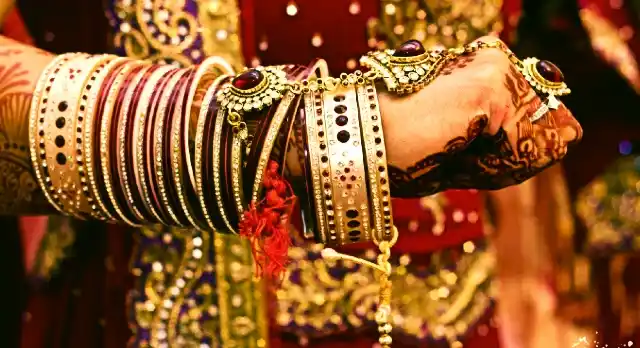Why baniyas don’t wear chuda? Know the Truth and Reason
By f fd May 24, 2023
In the colorful mosaic of Indian traditions, the absence of chuda, the red bangles worn by married women, among the Baniya community stands out. However, in certain communities like the Baniyas, the custom of wearing chuda is notably absent, sparking curiosity and speculation. Let’s delve into the cultural nuances and historical context to uncover the reasons behind this intriguing phenomenon.

why baniyas don’t wear chuda
Getting to Know Baniyas: Who Are They?
Baniyas are a well-known merchant community in India, famous for their business skills. They have their unique customs and beliefs that shape their way of life.
What Matters to Baniyas
- Business Comes First: Baniyas focus a lot on doing good business, seeing it as a way to show off their wealth and status.
- Family is Everything: Family is super important for Baniyas. They’re really close-knit and believe in sticking together.
- Traditional, but Not Too Much: Baniyas tend to stick to what’s traditional but also like to keep things simple and modest.
Why baniyas don’t wear chuda?
Here’s the lowdown on why Baniyas don’t wear chuda or do not follow this tradition.
Keeping it Real
Practical Considerations: Baniyas prioritize practicality and utility, often favoring customs that align with their pragmatic worldview.
Minimalist Aesthetic: Chuda, with its ornate design and vibrant hues, may conflict with the understated elegance favored by Baniyas in their attire and adornments.
Business Imperatives
Professional Image: As merchants and traders, Baniyas prioritize professionalism and a modern outlook in their interactions with clients and business associates. Traditional attire such as chuda may not align with this image.
Freedom of Movement: The nature of Baniya businesses often requires mobility and flexibility, with restrictive accessories like bridal chuda potentially hindering their day-to-day activities.
Key Takeaways
- Cultural Diversity: India’s cultural landscape is characterized by a rich tapestry of traditions, with each community contributing to the vibrant mosaic of customs and beliefs.
- Pragmatic Adaptation: Baniyas exemplify the adaptive nature of cultural practices, blending tradition with practicality to navigate the demands of modern life.
- Respectful Understanding: Exploring cultural nuances fosters empathy and appreciation for diverse perspectives, enriching our collective understanding of human experience.
In unraveling the mystery behind why Baniyas don’t wear chuda, we gain valuable insights into the intricate interplay between tradition, pragmatism, and cultural identity. While customs may evolve over time, the essence of heritage remains deeply ingrained in the tapestry of Indian society.
FAQs
Why don’t baniyas wear chuda?
Baniyas skip wearing chuda mainly because of their practical outlook. They prioritize simplicity and functionality in their attire, and ornate bangles don’t fit their style. Additionally, as merchants, they prefer a professional image, and traditional accessories like chuda might not align with their business persona. Ultimately, it boils down to their pragmatic approach to life and work.
Is it a cultural or personal choice for baniyas?
It’s a bit of both. Baniyas’ cultural values emphasize practicality and modesty, which influence their personal choices. While there’s no strict cultural rule against wearing chuda, the community’s preference for simplicity and professionalism guides their decision to forgo these traditional bangles. So, it’s more about cultural values shaping individual preferences rather than a strict cultural mandate.
Are there any exceptions within the baniya community?
While the majority of Baniyas choose not to wear chuda, there may be exceptions based on individual preferences or regional variations. Some Baniya families might still uphold the tradition, especially in more traditional or religiously inclined households. However, such exceptions are relatively rare and don’t significantly alter the overall trend within the community.
Do baniya women follow other traditional customs related to marriage?
Yes, Baniya women adhere to various traditional customs related to marriage, such as wearing sindoor (vermilion) in the parting of their hair and mangalsutra (a sacred necklace symbolizing marriage). These customs hold deep cultural and religious significance and are often observed by Baniya women as part of their marital traditions.
How do other communities perceive baniyas’ choice regarding chuda?
Perceptions vary, but generally, other communities respect Baniyas’ decision as a matter of personal or cultural preference. While some may find it unusual given the widespread adoption of chuda in Indian culture, there’s an understanding that cultural practices can differ across communities. Overall, respect for diversity and individual choice prevails in inter-community interactions.
